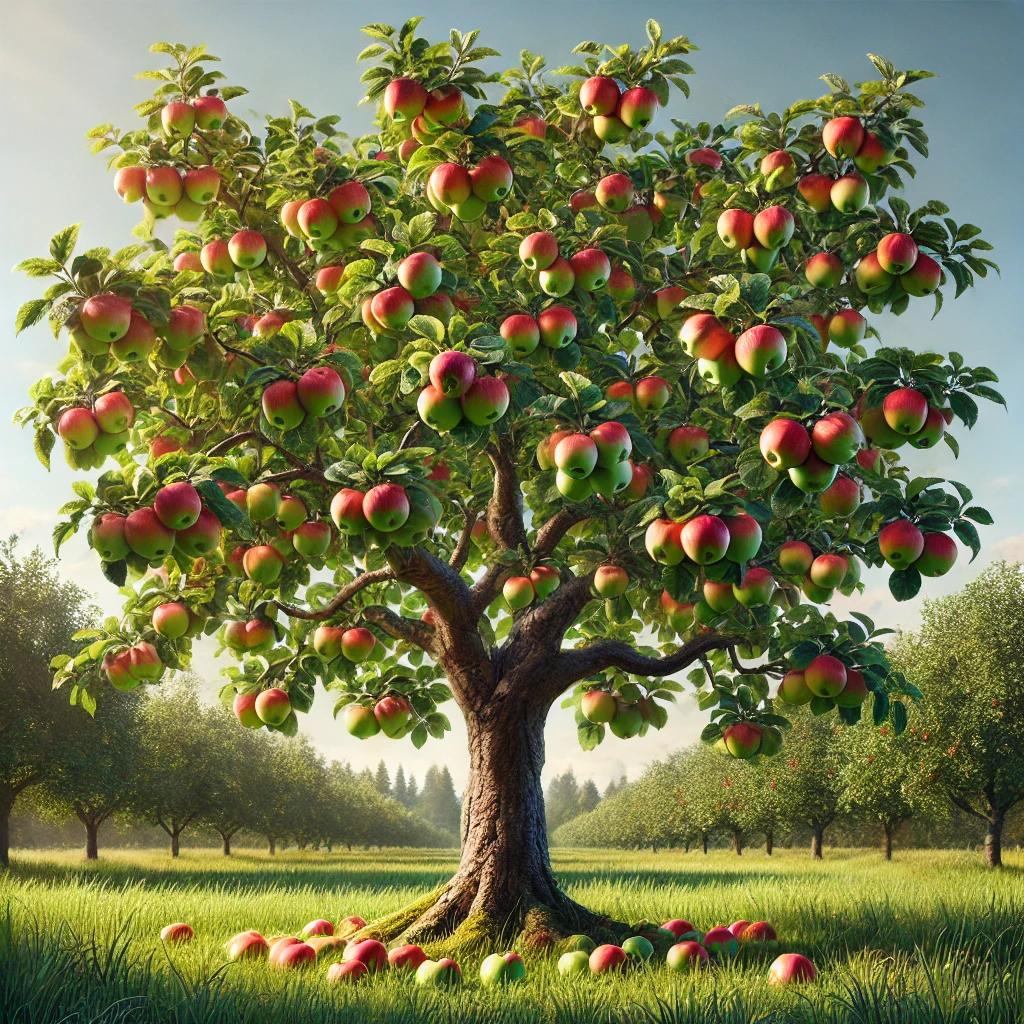
Apple
Malus domestica
Basic Information
🌿 Family: Rosaceae🗺️ Zone: 3-9
Other Names:
- Malus
🌡️ Ideal Temperature : 32°F – 85°F
🔥 Heat Tolerance: Up to 100°F
❄️ Cold Tolerance: Down to -40°F
🌱 Type: Perennial
Layers
- Canopy
- Sub-Canopy
Functions
- Edible
- Medicinal
- Pollinator
- Wildlife Attractor
- Mulcher
- Dynamic Accumulator
- Erosion Control
- Border Plant
Pests
Description
The Apple Tree (Malus domestica) is a deciduous fruit tree that produces a variety of apples used for fresh eating, cider-making, and cooking. It typically grows between 3–9 meters (10–30 feet) tall, depending on the rootstock and cultivar.
Apple trees thrive in temperate climates with cold winters for proper dormancy. They require cross-pollination from compatible varieties for fruit production. The trees bloom in early spring with fragrant white to pink flowers, attracting bees and other pollinators. The fruit ripens in late summer to fall, with a wide range of flavors, colors, and textures depending on the cultivar. Proper pruning enhances airflow, reduces disease risk, and improves fruit quality.
🌞💧 Sun and Water Requirements:
- Prefers full sun for optimal fruiting.
- Requires well-drained, loamy soil rich in organic matter.
- Moderate water needs; deep watering during dry periods promotes strong root growth.
✂️🫘 Methods to Propagate:
- Grafting: The most common method, ensuring desired fruit traits.
- Seeds: Can be grown from seed but results in unpredictable fruit characteristics.
- Cuttings: Hardwood cuttings can root, but success rates vary.
🧑🌾👩🌾 When to Harvest:
- Harvest times vary by cultivar, typically between late summer and fall.
- Fruit is ready when it detaches easily from the branch with a slight twist.
- Store apples in a cool, dry place to extend shelf life.
Purpose
Apple trees serve multiple functions in a permaculture system:
- Edible: Produces nutrient-rich fruit used fresh, dried, or for cider-making.
- Medicinal: Apple cider vinegar and fruit compounds support digestion and immune function.
- Pollinator: Blossoms attract bees, butterflies, and other beneficial insects.
- Wildlife Attractor: Provides food and habitat for birds, mammals, and pollinators.
- Mulcher: Fallen leaves enrich soil as they decompose.
- Dynamic Accumulator: Draws up deep soil nutrients like potassium and calcium.
- Erosion Control: Deep roots help stabilize soil in orchard settings.
- Border Plant: Used as a productive boundary plant in food forests.